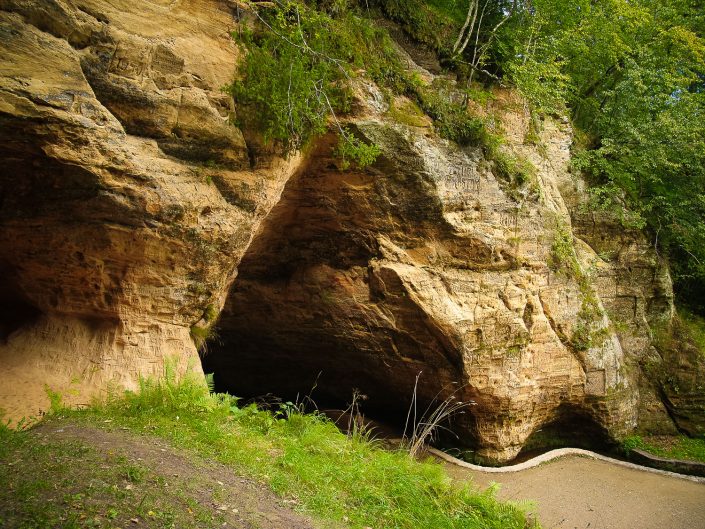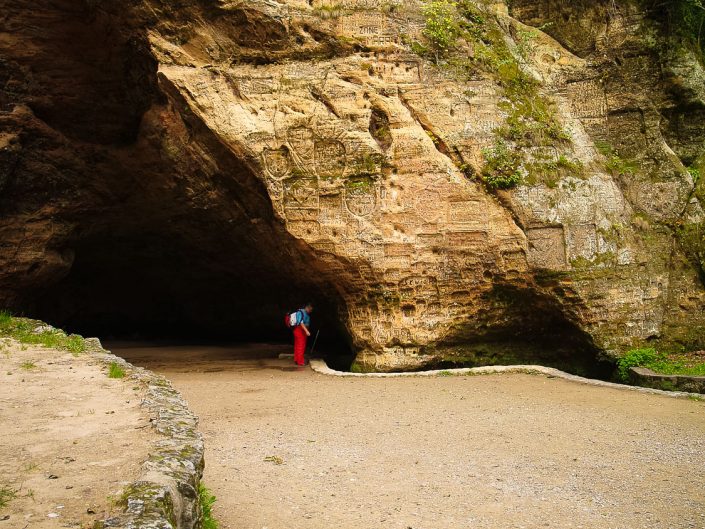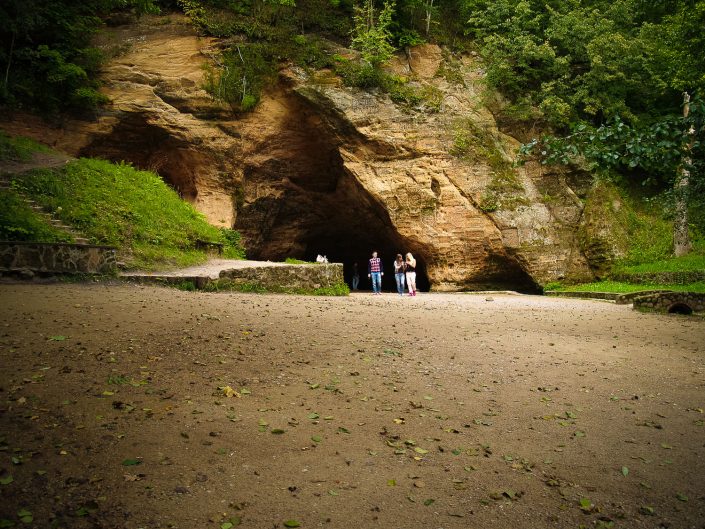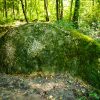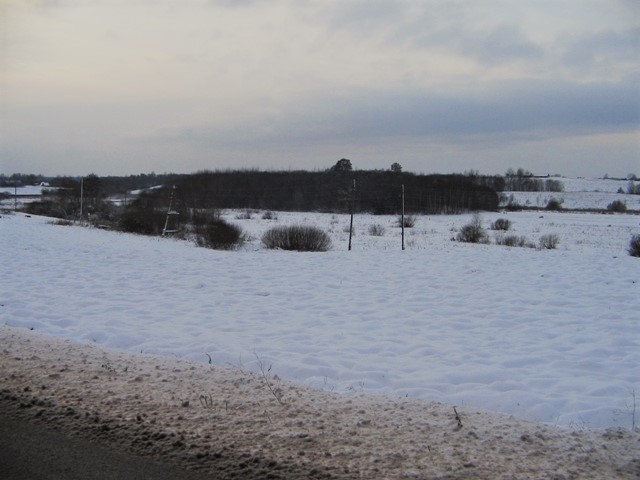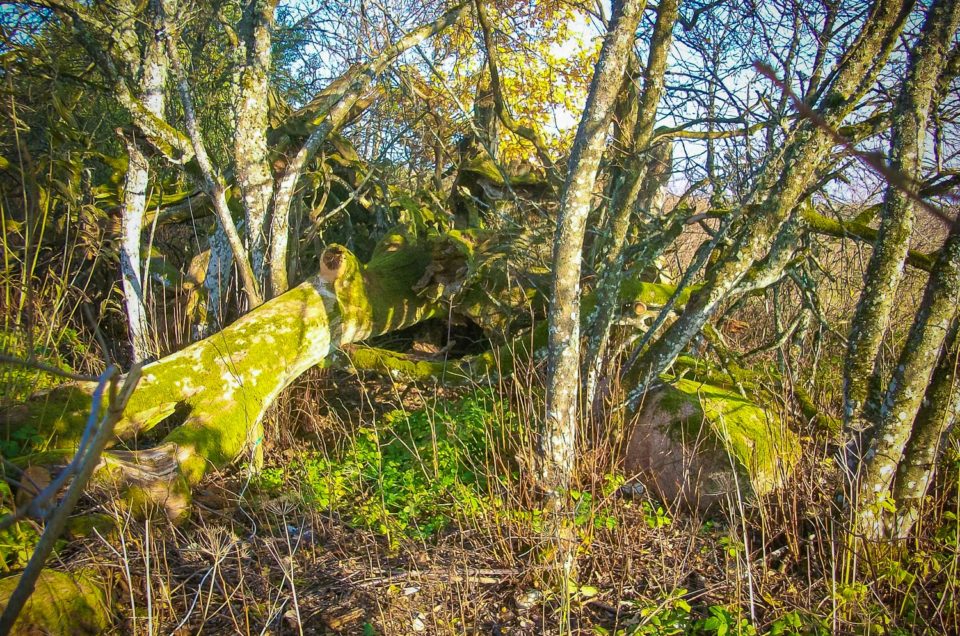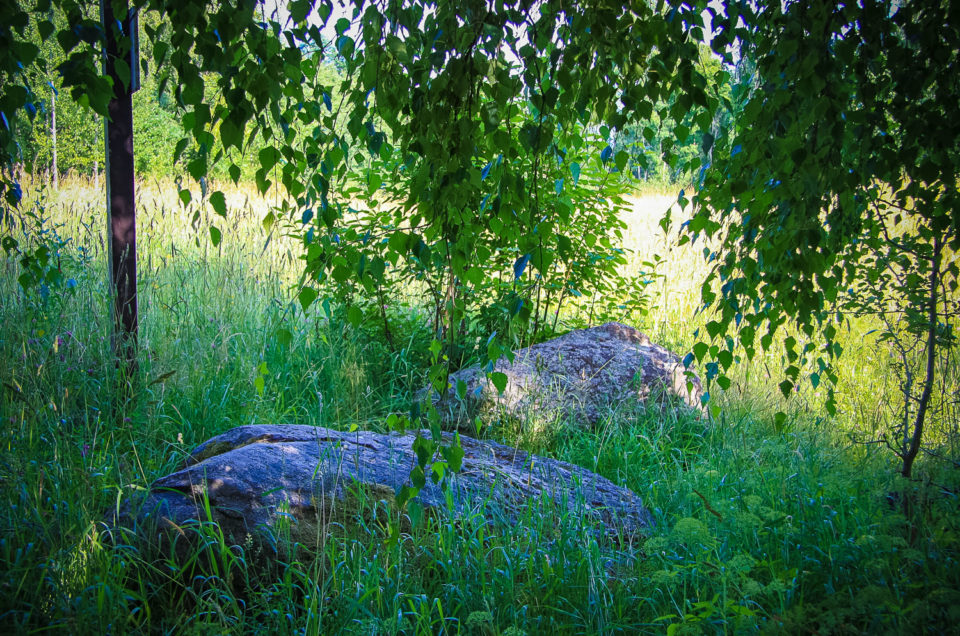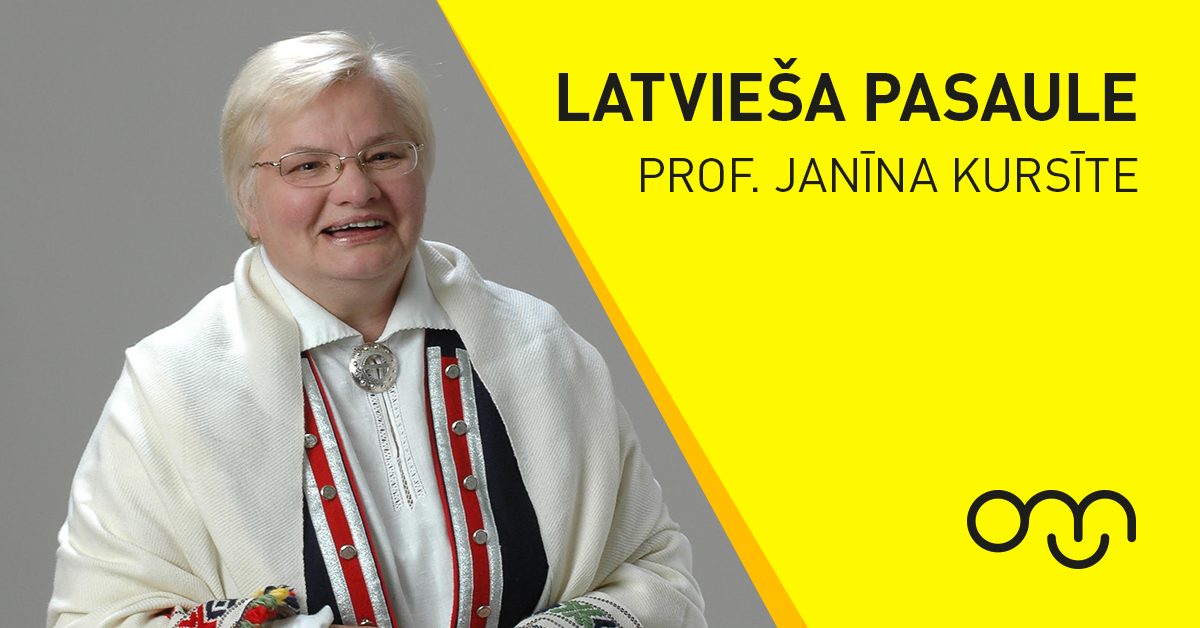Gūtmanis Cave is the biggest grotto not only in Latvia but also in Baltics. Precise measurements of the cave were first taken by Guntis Eniņš in 1972. According to his calculations, the volume of the cave is 500 m3, area of its floor is 170 m2, however, its length is 18.8 m. At its entrance the cave is 10 m high and 10.6 m wide, however, in its depth it rapidly gets narrower. Geologist Ojārs Āboltiņš believes that the formation of the cave started approximately 10,000 years ago by the lateral erosion caused by the post ice age water streams, but up to nowadays suffusion processes have been taking place – the powerful spring running from the cave continues enlarging the grotto, consequently it can be assumed that Gūtmanis cave is one of the oldest caves in Latvia. It acquired its current looks before the present era. The cave is one of the oldest and most popular tourism sites in Latvia. Thanks to the convenient geographical location close to the main highways and several settlements (Sigulda, Turaida, Krimulda) Gūtmanis Cave has already since the 16th century or even earlier time been a popular site. This is proved by the ancient inscriptions on the walls of the cave and frequent descriptions in written sources dating back to the second half of the 18th century. It is indicative that in the descriptions of the late 18th century the name of Gūtmanis Cave is not mentioned and it is simply called the cave at Krimulda or Turaida. The first to publish the name of the cave was natural scientist Jacob Benjamin Fisher in 1778 who wrote that “At Turaida there is a cave which consists of sandstone and is called the Good Man”. It seems that this name was taken over to the Latvian language as Gūtmaņala at the beginning of the 19th century. At the end of the 18th century the most comprehensive description of the cave was published by J. B. Fisher in the second edition of his paper “Versuch einer Naturgeschichte von Livland” and by count Ludwig August Mellin. Fisher was the first to publish the dimensions of the cave which travelled from one publication to the next one for more than a century, i.e., up to the beginning of the 20th century. Although several authors had previously described the spring running from the cave, only in 1791 Fisher indicated that the local peasants used the water for treating diseases in belief that the water is associated with the sacrality of this place, i.e., the cave rather than the good qualities of the water. However, in 1794 Johann Christoph Brotze conceded that the peasants might have believed that some beneficial deity lived in the cave spring which might have been the origin of the cave name – the Good Man. Both Fisher and Mellin indicated that the peasants left sacrifices – coins and pieces of clothing – in the spring for using the water although according to the observations of the former author the tradition had already started to die out at the end of the 18th century. In his description Mellin also characterized the wall inscriptions mentioning that travellers scrape their names, coats-of-arms, years and similar inscriptions in the sandstone. For the first time in the descriptions devoted to caves a reference appears here to a specific year which can be found in the ceiling of the cave and is covered with moss. It dates back to year 1564. Later the mentioning of the old inscriptions of this ad other caves became one of the traditions of tourism literature. In some travel guides of the late 19th and early 20th century even long lists of the old scrapings were published. The oldest inscription which has been partly preserved in the cave is “Anna Magdalena von Tiesenhavsen Anno 1677”. Thanks to the popularity of the cave it has been recorded in many drawings. The authors of the earliest pictures are J. C. Brotze (1794, 3 drawings), J. V. Krauze (1795), G. G. Kīzerickis (1813) and V. Z. Stavenhagen (1866). Nowadays Gūtmanis Cave cannot be imagined without the legend about the Rose of Turaida, however the origin of the legend can be attributed to the 19th century. An interesting phenomenon characterizing all famous caves of Sigulda vicinity is the almost absolute lack of legends in connection with these caves. In the travel guides of the early 20th century a legend was published about the Livs’ chief Ridaigs or Ridaugs who had dug his unfaithful wife in a rock and her tears had turned into a spring and eroded the cave. It can be assumed that the legend is attributable to the time of national awakening when there was a particular interest in the history of the “golden age” of Latvia and the ancient pre-Christ mythology. The interest in the chiefs of the ancient tribes belongs to the movement and the legend about the Livs’ chief Ringalds appeared as a result of such processes. Still another legend has been recorded that has not been published in tourist literature. It reports about a giant carrying a stone instead of which the Gutmanis cave appeared. It is possible that from the legends previously mentioned this is the only legend traditionally connected with the cave. It has a traditional plot and the belief that the legend has existed in folklore is that this kind of texts have not been published in tourism literature.
FK”) 884, 5911. Rec. by Rasma Šteinerte, Bērzmuiža primary school,1936. 2) The Livs’ Chief Ringalds went in war. At home he left his beautiful wife warning her to remain faithful to him until he returned from the war. His wife waited and waited for him, however still became unfaithful to him. When her husband returned his wife was remorseful and was asking him to forgive, however, Ringalds did not forgive her. He ordered to bury his wife in the ground. She has been crying there under the earth up to this day her tears of regret. They have turned into a spring and run out onto the surface of the ground. Thus the spring has eroded the Gūtmanis Cave. LFK 1860, 2619. Anna Īvena Siguldā, 47 years old; rec. by J. A. Jansons, LFK 4th scientific exp., 1950 (after: Laime, 2009).
Extra materials:
Contains information from the project:

Added by
www.latvijas-pilskalni.lv, www.senvietas.lv un hillforts.eu izveidotājs un uzturētājs.
